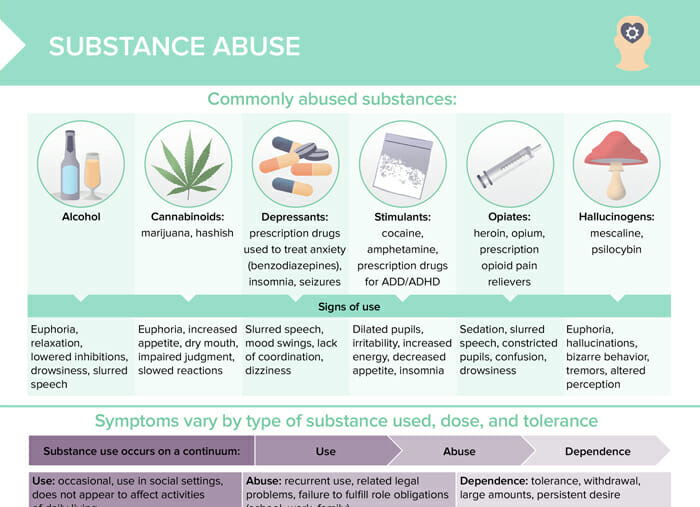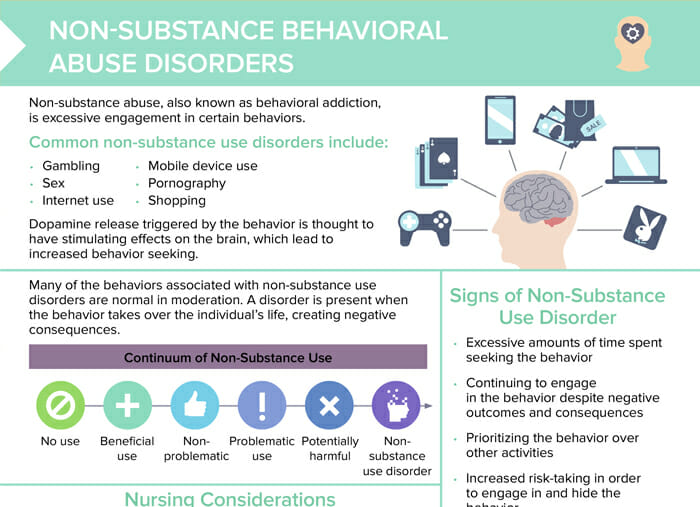What are behavioral addictions?
Definition
Behavioral addictions (non-substance use disorders, non-substance abuse) are excessive engagement in certain behaviors that take over an individual’s life, creating negative consequences.
Pathophysiology of behavioral addiction
Behavioral addictions are thought to involve dysregulation of the brain’s reward system. Engaging in the addictive behavior triggers the release of dopamine, creating a sense of reward. Overtime, the effect may wear off, triggering the individual to engage in the behavior more frequently to achieve the same feeling of pleasure, leading to an addictive cycle. As a nurse, understanding this pathophysiology can help in providing empathetic care, explaining the condition to clients, and supporting treatment strategies.
Common behavioral addictions: examples
Common non-substance use disorders include:
- Gambling
- Sex
- Internet use
- Pornography
- Shopping
- Excessive mobile device use
The continuum of non-substance use
Many of the behaviors associated with non-substance use disorders are normal in moderation. A disorder is present when the behavior takes over the individual’s life, creating negative consequences.
The continuum of non-substance use, also referred to as the continuum of behavioral addictions, describes the range of engagement in certain behaviors. This continuum can range from healthy, normative use to problematic or addictive use.
No use → Beneficial use → Non-problematic → Problematic → Potentially harmful → Non-substance use disorder
It’s important to note that not all individuals who engage in potentially addictive behaviors will progress along this continuum, and the rate of progression can vary widely.
What are the signs of non-substance use disorders?
- Excessive amounts of time spent seeking the behavior
- Continuing to engage in the behavior despite negative outcomes and consequences
- Prioritizing the behavior over other activities
- Increased risk-taking in order to engage in and hide the behavior
- Continuing the behavior despite the loss of significant familial, social, or professional relationships
- More frequent engagement in the behavior required to attain pleasure
- Unsuccessful attempts to limit the behavior
- Withdrawal symptoms (mood changes, irritability) when unable to engage in the behavior
How can behavioral addictions be treated?
- Meetings and support groups
- Individual, couple, or family therapy (CBT)
- Mindfulness practices
- Pharmacotherapies developed for substance use disorders are under investigation for potential benefit in non-substance use disorders.
Nursing considerations about behavioral addiction
- Facilitate open, nonjudgmental communication.
- Assess readiness for change.
- Utilize motivational interviewing strategies.
- Remain aware of resources available in your area.
- Provide support and referral as needed.

